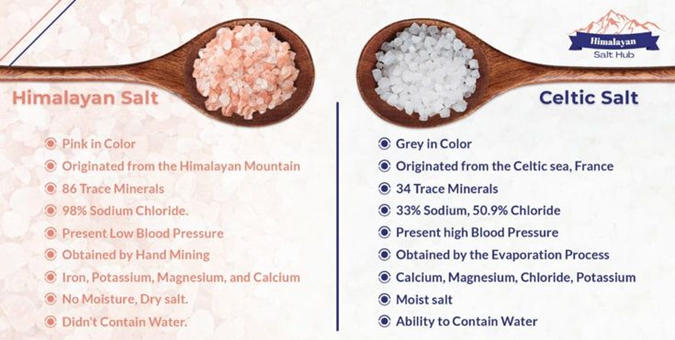
Different Types of Salt Used in Fermentation
Salt plays a vital role in fermentation, offering various benefits that extend beyond mere seasoning. It is essential for preserving food, enhancing flavors, and controlling microbial activity. Various types of salt, including table salt, kosher salt, sea salt, Himalayan pink salt, and rock salt, are utilized in fermentation, each contributing distinct characteristics to the process. The choice of salt can significantly impact the fermentation environment, influencing the growth of beneficial bacteria, the speed of fermentation, and the overall quality of the finished product.
Table salt is the most widely used type in everyday cooking. It undergoes extensive refining and often contains additives like iodine and anti-caking agents to prevent clumping. While it is easily accessible, these additives can disrupt the natural fermentation process. Iodine, in particular, may inhibit the growth of beneficial microorganisms such as lactic acid bacteria (LAB), which are crucial for many fermentation methods. Research indicates that iodine can suppress LAB growth, making table salt less suitable for specific fermentation tasks. Furthermore, the fine texture of table salt allows it to dissolve rapidly, which can speed up the fermentation process and potentially alter the flavors and textures of the final fermented products.
Kosher salt is often favored for fermentation because of its purity and absence of additives. It is generally free from iodine and anti-caking agents, making it an ideal choice for fermenting vegetables, meats, and other foods. With its larger crystals compared to table salt, kosher salt dissolves more slowly, allowing for better control during the fermentation process. The lack of additives promotes the growth of beneficial bacteria, such as lactic acid bacteria (LAB), which are essential for developing flavors in products like sauerkraut, kimchi, and pickles. Furthermore, its purity and gradual dissolution rate help maintain a controlled fermentation environment, enabling flavors to evolve steadily without the risk of over-fermentation.
Sea salt is another popular option for fermentation. It is obtained by evaporating seawater and retains various trace minerals, including magnesium, calcium, and potassium, which are often removed during the refining of table salt. These minerals can affect the microbial environment during fermentation, potentially boosting the growth of beneficial bacteria and leading to more complex flavors in the final products.
The mineral content of sea salt can also influence the fermentation rate, with some research indicating that magnesium may particularly aid specific microbial strains. However, since the mineral composition can vary significantly among different sea salt sources, it’s crucial to select high-quality sea salt from a trusted supplier to achieve consistent fermentation results.
Himalayan pink salt is gaining traction in the fermentation world, often promoted for its health advantages due to its abundant mineral content. However, its effectiveness in fermentation remains a topic of discussion. Sourced from ancient salt deposits, this salt boasts over 80 trace minerals, such as iron, magnesium, and calcium.
These minerals might enhance the taste and texture of fermented foods, but research on their specific effects during fermentation is still limited. While some advocates believe that the varied mineral composition offers extra benefits, others contend that the impact on fermentation is not thoroughly documented and can differ depending on the salt batch. Similar to sea salt, the inconsistency in mineral content and the lack of comprehensive studies make Himalayan pink salt less reliable for precise or large-scale fermentation.
Rock salt, much like sea salt, is generally extracted from ancient salt deposits and is frequently utilized in large fermentation processes. It is minimally processed, which means it is free from additives, and it dissolves more slowly than regular table salt, making it advantageous for extended fermentation. This type of salt is especially effective in brining, such as when fermenting olives and other pickled vegetables. Rock salt, akin to sea salt, contains various trace minerals that may affect the microbial environment in the brine, although its specific influence on fermentation has not been as extensively researched as other salt varieties.
Comparing Table Salt, Sea Salt, and Kosher Salt in Fermentation:
Fermentation is an age-old and essential method for preserving food, utilizing microorganisms to create a wide range of flavors and textures. One of the crucial components in this process is salt, which plays a vital role in managing microbial growth, extracting moisture from food, and enhancing flavor. The kind of salt selected can significantly affect the fermentation rate, flavor profile, and overall quality of the final product.
The three most commonly utilized salts in fermentation are table salt, sea salt, and kosher salt. Although they all help regulate osmotic pressure to preserve food and promote microbial activity, their unique chemical compositions, mineral contents, and particle sizes make each one better suited for different fermentation methods. This paper will explore the properties and impacts of table salt, sea salt, and kosher salt in fermentation, referencing research and findings to clarify their individual contributions.
Salt in Fermentation Processes:
Table salt, the most commonly used type of salt, is a highly processed product primarily made up of sodium chloride (NaCl). The refining process removes most trace minerals, leaving just sodium chloride behind. Additionally, table salt often includes additives like iodine and anti-caking agents to keep it flowing freely and to prolong its shelf life. While these additives are useful for everyday cooking, they can disrupt the delicate balance of microorganisms essential for effective fermentation.
Iodine, a frequent component of iodized table salt, has been shown to inhibit the growth of beneficial bacteria, especially lactic acid bacteria (LAB), which are vital for fermenting foods such as pickles, sauerkraut, and kimchi. Research by Klopfenstein et al. (2014) indicates that iodine can adversely affect LAB growth, potentially slowing or stopping the fermentation process. This poses a significant issue in vegetable fermentations, where LAB are the main agents responsible for creating the desired sour flavors.
Moreover, table salt's fine granules dissolve quickly when mixed with brine or other liquids, which increases osmotic pressure and speeds up the fermentation process. While this rapid dissolution can be beneficial for quick-pickling techniques, it may also result in uneven or imbalanced fermentation.
The swift dissolving nature and lack of mineral variety in table salt make it less suitable for long-term fermentations, which require a slow and controlled environment for beneficial bacteria to develop gradually and naturally.For these reasons, although table salt can be helpful for rapid fermentation, it is typically not advised for traditional slow-fermented foods, where maintaining microbial diversity and cultivating complex flavors is crucial.
Sea Salt in Fermentation:Sea salt is created by evaporating seawater and undergoes minimal processing, which allows it to retain many of the natural minerals present in seawater. These trace minerals, including magnesium, calcium, potassium, and iron, are often stripped away during the refining of table salt. The mineral composition of sea salt plays a crucial role in fermentation, as it can affect the microbial environment within the brine or fermentation medium.
The rich mineral content of sea salt is thought to enhance the flavors of fermented foods. Research indicates that specific minerals, especially magnesium, are vital for boosting microbial activity. For example, magnesium has been shown to aid the growth of lactic acid bacteria (LAB) in fermented vegetables, thereby improving both the fermentation process and the flavor of the end product.
Additionally, other trace minerals like calcium may help stabilize the cell membranes of LAB, leading to more reliable fermentation. These minerals also contribute to a more intricate flavor profile as they interact with both the food and the microorganisms involved in the fermentation process.
One of the main advantages of sea salt is its ability to support a broader range of microbial activity compared to more refined salts. This diversity can enhance the microbial community during fermentation, which is beneficial for specific fermented products. For instance, sea salt is often utilized in the fermentation of traditional pickles and artisanal sauerkraut, where the variety of microbial species plays a crucial role in developing distinctive and complex flavors.
However, the mineral composition of sea salt can differ greatly depending on its origin, leading to variations in mineral and trace element levels from one batch to another. This inconsistency can create unpredictability in the fermentation process, making it difficult to achieve uniform results across different batches. While such variability might be acceptable in artisanal fermentations, it poses challenges in industrial or large-scale fermentation processes where consistency and reproducibility are vital.
In addition to its mineral content, sea salt is available in various textures, from fine grains to larger crystals, which can affect how quickly it dissolves and influences the overall fermentation process. For example, larger crystals dissolve more slowly than fine-grain sea salt, allowing for a more gradual fermentation. This slower dissolution is beneficial for extended fermentation periods, as it fosters a more controlled environment for microbial growth, reducing the risk of over-fermentation and the development of undesirable flavors.
Kosher Salt in Fermentation
Kosher salt is a favored option for fermentation, especially in home settings and small-scale production. Unlike regular table salt, kosher salt is less processed and generally free from additives like iodine and anti-caking agents. This purity makes it an excellent choice for fermentation, as it does not hinder the growth of beneficial bacteria. Its larger, coarser crystals dissolve more gradually compared to the fine grains of table salt, allowing for a more controlled fermentation process. This is particularly crucial for the long-term fermentation of vegetables, meats, and dairy products.
One of the key benefits of kosher salt is its lack of impurities, ensuring that no unwanted chemicals or additives enter the fermentation medium. The absence of iodine and anti-caking agents makes it especially suitable for vegetable fermentation, promoting the thriving of lactic acid bacteria without any interference. Furthermore, the slower dissolution of kosher salt’s larger crystals offers better control over the fermentation process, which is essential for achieving the desired flavors and textures through careful monitoring and a more gradual rate of microbial activity.
Kosher salt is widely used in the fermentation of vegetables such as sauerkraut and kimchi. It creates an ideal environment for lactic acid bacteria (LAB) to thrive, which enhances the fermentation process and contributes to a pleasing flavor. The uniform distribution of salt in the brine helps maintain a steady salinity level, crucial for keeping the microbial community balanced during fermentation.
Additionally, many prefer kosher salt for its consistent and dependable results in fermentation. Unlike sea salt, which can differ in mineral content based on its origin, kosher salt is known for its purity and uniformity, making it a top choice for both home cooks and commercial producers. This consistency helps ensure that the fermentation process unfolds as intended, reducing the chances of flavor variations or microbial imbalances.
The Role of Mineral-Rich Salts in Fermentation (e.g., Himalayan Salt, Celtic Sea Salt):
Fermentation is a time-honored method of food preservation that utilizes microorganisms to convert raw ingredients into more complex and often healthier forms. A key element in this process is salt, which helps manage osmotic pressure, inhibit the growth of harmful microorganisms, and promote the activity of beneficial bacteria, especially lactic acid bacteria (LAB), that are essential for fermentation.
While common varieties like table salt and kosher salt are frequently used, mineral-rich salts such as Himalayan salt and Celtic sea salt are gaining popularity in fermentation due to their claimed health advantages and the beneficial trace minerals they provide. This paper delves into the importance of these mineral-rich salts in fermentation, with a particular emphasis on Himalayan and Celtic sea salts, examining their distinct characteristics and the potential effects they have on microbial activity, flavor enhancement, and the overall quality of fermented products.
The Makeup of Mineral-Loaded Salts: Himalayan Salt and Celtic Sea Salt
Mineral-rich salts, such as Himalayan pink salt and Celtic sea salt, have distinct compositions compared to refined salts. Himalayan salt is primarily sourced from the ancient Khewra Salt Mine in Pakistan and boasts over 80 trace minerals, including iron, magnesium, calcium, and potassium. Its minimal processing allows it to retain these essential minerals, unlike refined table salt, which loses most of its natural mineral content. The pink color of Himalayan salt is a sign of its iron content, a key factor in its rich mineral profile.
On the other hand, Celtic sea salt is gathered from the coastal areas of France and is also recognized for its high mineral content. This unrefined salt contains vital minerals like magnesium, calcium, potassium, and sulfate.
Its harvesting process, which relies on the natural evaporation of seawater, helps maintain these minerals in their original form. Like Himalayan salt, Celtic sea salt is unrefined, preserving many elements found in seawater, which contributes to its diverse mineral composition. The differences in mineral content between these salts can affect microbial activity and fermentation, creating an environment that may better support the growth of beneficial microorganisms compared to refined salts.
Effects of Mineral-Rich Salts on Microbial Activity During Fermentation:
One of the key functions of salt in fermentation is its ability to manage osmotic pressure, fostering an environment that encourages beneficial microorganisms while deterring harmful ones. The trace minerals present in Himalayan salt and Celtic sea salt can amplify this effect by subtly influencing the microbial landscape. The impact of minerals like magnesium, calcium, and potassium on microbial growth during fermentation has garnered attention in various research studies.
For instance, magnesium is recognized for its vital role in stabilizing bacterial cell membranes and enhancing enzymatic functions. Studies indicate that magnesium can boost the growth of lactic acid bacteria (LAB), which are crucial for fermenting a variety of foods, including vegetables, dairy, and meats. By encouraging LAB growth, which produces lactic acid, magnesium helps ensure that fermentation occurs at the desired pace.
The production of lactic acid is essential for food preservation, as it lowers pH levels and creates an environment that is hostile to spoilage bacteria and pathogens. Thus, the magnesium found in Himalayan salt and Celtic sea salt could potentially lead to a more effective and controlled fermentation process by supporting LAB growth.
Calcium, another important mineral in both Himalayan salt and Celtic sea salt, also contributes to fermentation. Calcium ions are known to stabilize bacterial membranes and assist in cellular processes vital for fermentation, such as metabolite production, including lactic acid. Additionally, calcium may help maintain the structural integrity of the cell walls in fermented vegetables, preventing them from becoming overly soft or mushy during the fermentation process.
This is especially important for vegetable fermentations such as sauerkraut and kimchi, where the texture of the end product is a key quality factor. Additionally, calcium helps regulate pH levels during fermentation by interacting with the organic acids produced by the microbial community, which aids in creating an optimal fermentation environment.
Potassium, found in substantial quantities in both Himalayan salt and Celtic sea salt, also affects microbial activity by managing osmotic pressure. It helps maintain a balanced osmotic environment in the brine, which is crucial for preserving the desired microbial population.
Moreover, potassium can promote the growth of specific strains of lactic acid bacteria (LAB), further enhancing the fermentation process. However, the exact role of potassium in fermentation is not as well understood as that of magnesium and calcium. Still, its presence in mineral-rich salts likely contributes to a healthier and more balanced microbial ecosystem, which is essential for developing the right flavors and textures in fermented foods.
In addition to these minerals, the trace elements found in Himalayan salt and Celtic sea salt may also enhance microbial diversity. Research on microbial communities in fermented foods indicates that a diverse range of microorganisms is often linked to more complex and appealing flavors.
The variety of minerals in these salts could help create an environment that fosters a wider array of beneficial microorganisms, resulting in a more diverse fermentation process. This is particularly advantageous for artisanal fermentations, where complexity and depth of flavor are highly prized.
Exploring Flavor Creation and Depth in Fermented Foods
One of the most striking effects of incorporating mineral-rich salts like Himalayan salt and Celtic sea salt in fermentation is how they enhance the flavor profile of the final product. Fermentation serves not just as a method of preservation but also as a way to elevate the flavors of food, often leading to the emergence of intricate, tangy, and umami-packed tastes. The minerals present in these salts can play a significant role in flavor development.
For example, the trace minerals in Himalayan salt add a subtle yet unique flavor that can elevate the overall taste of fermented foods. Although the flavor impact of Himalayan salt may not be as strong as that of other flavoring agents, its distinctive mineral composition is thought to provide a more rounded and savory taste to fermented items. This effect is especially evident in vegetable ferments, where the salt’s natural mineral richness beautifully complements the tangy and sour flavors created by lactic acid bacteria during the fermentation process.
Celtic sea salt is celebrated for its intricate flavor profile, which stems from its rich mineral content. Notably, the high amounts of magnesium and calcium contribute to a fuller, earthier taste in fermented foods. Research indicates that the minerals found in Celtic sea salt can amplify umami flavors, making it a favored option for fermentations like kimchi and pickles, where a deep and complex flavor is sought. Additionally, the sulfur compounds present in Celtic sea salt, formed during the evaporation process, may enhance its distinctive flavor traits, adding depth and complexity to fermented foods.
In dairy products like yogurt and cheese, mineral-rich salts can improve flavor balance by promoting the growth of specific bacteria that create appealing flavor profiles. The minerals in both Himalayan and Celtic sea salts can lead to the development of richer and more nuanced flavors, resulting in a product that boasts a deeper, more harmonious taste compared to those made with standard refined salts. Furthermore, the gradual dissolution of these salts allows for a slower fermentation process, enabling a more controlled flavor development.
Practical Aspects and Uses:While the advantages of using mineral-rich salts in fermentation are evident, there are some practical factors to consider when choosing these salts. The mineral composition of Himalayan salt and Celtic sea salt can differ based on their source and harvesting techniques, which means that the salt's makeup might not be uniform across different batches.
This inconsistency can introduce some unpredictability in the fermentation process, particularly in large-scale or industrial settings. On the other hand, for artisanal or home fermentations, this variability can contribute a unique character to each batch, as the minerals in the salt may subtly affect the flavor and texture of the final product in various ways.
Additionally, mineral-rich salts are generally pricier than refined salts, which could make them less feasible for large-scale production. However, for smaller-scale fermentations, like those in home kitchens or artisanal food production, the improved flavors and microbial benefits offered by Himalayan salt and Celtic sea salt can justify the investment.
Reasons Certain Salts Are More Effective for Fermentation Than Others:
Salt plays an essential role in fermentation, which is one of the most ancient methods of preserving food known to people. Its main role is to manage osmotic pressure, which helps regulate microbial growth, promote beneficial bacteria, and establish the right environment for effective fermentation. However, not all salts are equally suitable for this process; their effectiveness can depend on factors like mineral composition, granule size, additives, and solubility.
These differences can greatly influence the fermentation speed, the taste of the final product, and the overall balance of microbes. This paper investigates why some salts are more effective for fermentation than others by analyzing the characteristics of various salts and how they interact with the microbial community during fermentation.
The Role of Salt in Fermentation: Salt plays a crucial role in fermentation by managing osmotic pressure, which helps inhibit the growth of harmful bacteria and molds while promoting the development of beneficial microorganisms, especially lactic acid bacteria (LAB). These LAB are key players in fermentation, as they produce lactic acid, which lowers the food's pH, creating a preservation-friendly environment and imparting a distinct sour taste. Additionally, salt extracts moisture from the food, forming a brine that helps maintain the crispness of vegetables and other items being fermented, preventing them from becoming too soft or mushy.
Beyond these fundamental roles, salt can also affect the growth of specific bacteria vital for effective fermentation. The type of salt used can change the makeup of the microbial community by modifying the conditions for microorganism growth, such as the speed at which salt dissolves, the brine's ionic strength, and the levels of certain minerals present. Therefore, the mineral content, purity, and solubility of the salt are all significant factors that influence the success of the fermentation process.
Different Varieties of Salt and Their Impact on Fermentation:
Various types of salt can influence fermentation differently, based on their mineral composition, granule size, and any added ingredients. The salts most frequently utilized in fermentation include table salt, sea salt, kosher salt, and mineral-rich options like Himalayan pink salt and Celtic sea salt. Each of these salts possesses distinct properties that can impact the fermentation process, and recognizing these traits can clarify why some salts are more effective for fermentation than others.
Table Salt
Table salt is the most accessible type of salt and is frequently utilized in daily cooking and for preserving food. It is highly processed and primarily made up of sodium chloride (NaCl). The refining process strips away most trace minerals, resulting in a product that is nearly pure NaCl. This refinement also eliminates impurities found in natural salts, making table salt a very uniform product. It frequently includes additives such as iodine and anti-caking agents to help avoid clumping. While these additives are useful for general cooking, they can disrupt the fermentation process.
Iodine, in particular, has been found to inhibit the growth of beneficial lactic acid bacteria (LAB), which are essential for fermenting vegetables, dairy, and other foods. Research indicates that iodine can slow down or even stop the growth of LAB, significantly affecting the fermentation process (Klopfenstein et al., 2014). Additionally, the anti-caking agents in table salt can change how the salt dissolves in water, impacting osmotic pressure and potentially causing uneven fermentation.
Therefore, although table salt is affordable and widely accessible, it is generally not the ideal choice for fermentation, especially in traditional or artisanal methods where LAB presence and the development of complex flavors are vital.
Sea Salt
Sea salt is obtained by evaporating seawater and is frequently promoted as a more natural or health-oriented substitute for refined table salt. Unlike its table counterpart, sea salt retains essential trace minerals like magnesium, calcium, potassium, and iron found in seawater. These minerals can significantly influence the fermentation process by creating a more conducive environment for beneficial microorganisms to thrive.
All rights reserved by Bubble Organic © 2025






